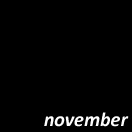























If someone asked me what my favorite image is from any given trip, I might have difficulty pointing to a singular image. But for the Seattle trip in October, this is “The Image”; I’m not even sure why. I simply love this photo – the entire trip was a photographic adventure, but this image stands above all the others in my mind.






On the day that we visited the Museum of Pop Culture, the sky was perfect; bright sunshine diffused through high and wispy clouds. The muted sunlight was perfect for capturing the golden hue on the metallic waves; there’s another hundred compositions that could be made off of this building.


So many of Chihuly’s sculptures resemble sea creatures, but this gigantic creation actually has small fish and shells and other aquatic life integrated into the design. This is the first large creation that you see as you take the tour of Chihuly Garden & Glass, and it is awe inspiring!

I absolutely loved photographing the Museum of Pop Culture in Seattle; but I would love to photograph any of Frank Ghery’s buildings!






















































































